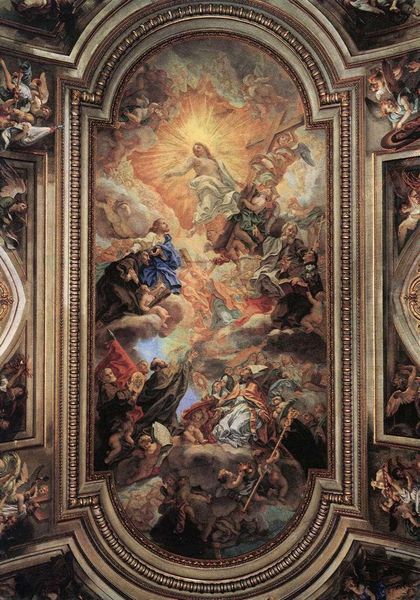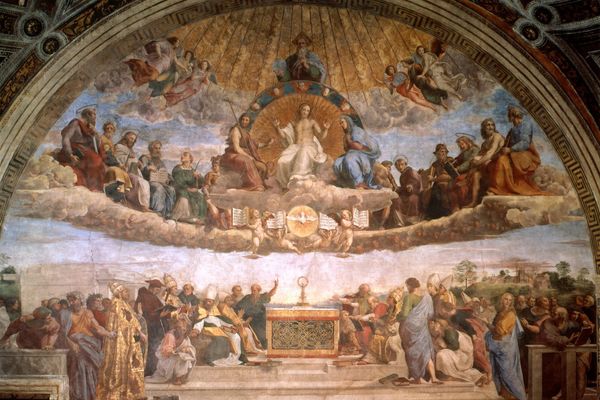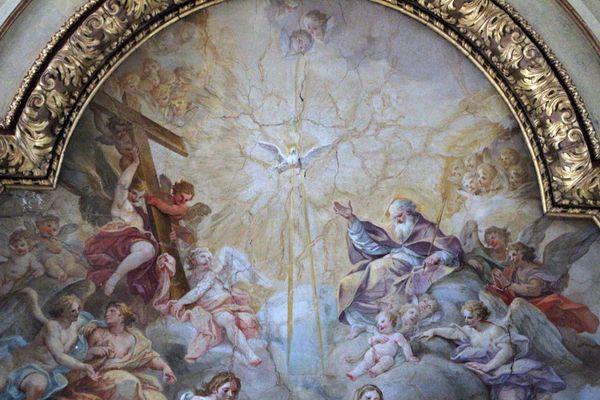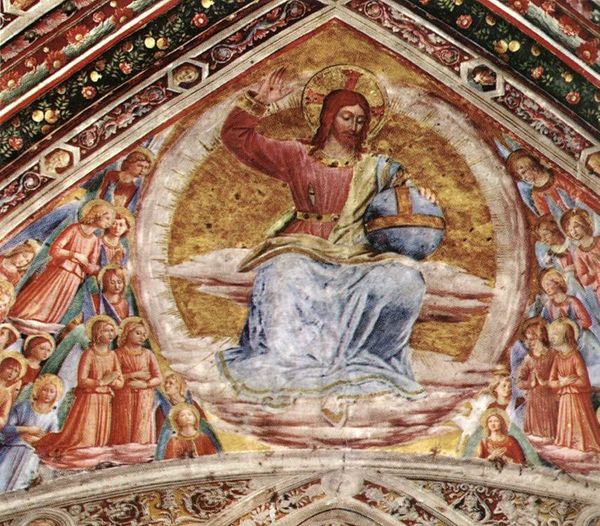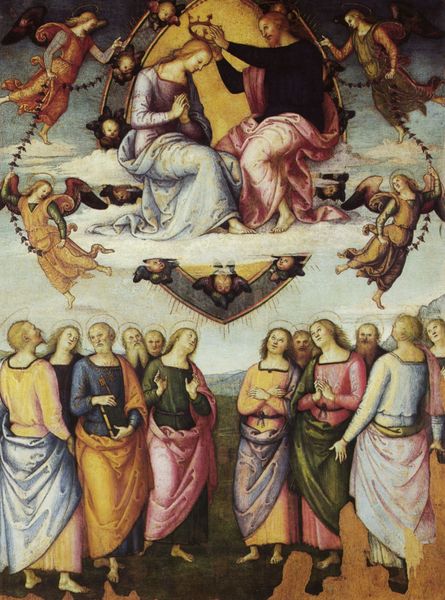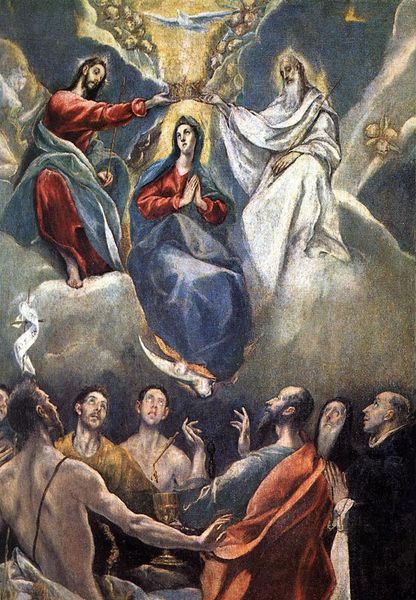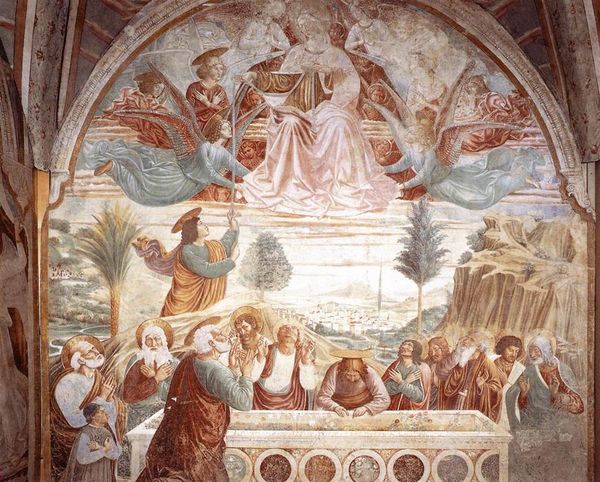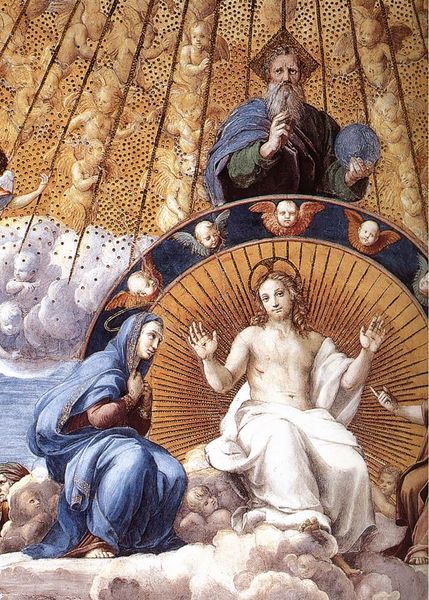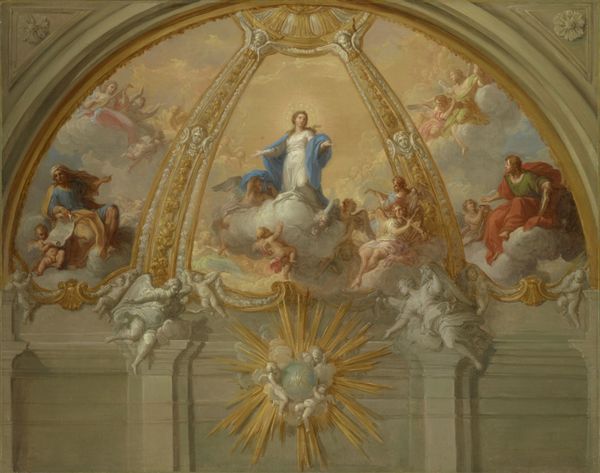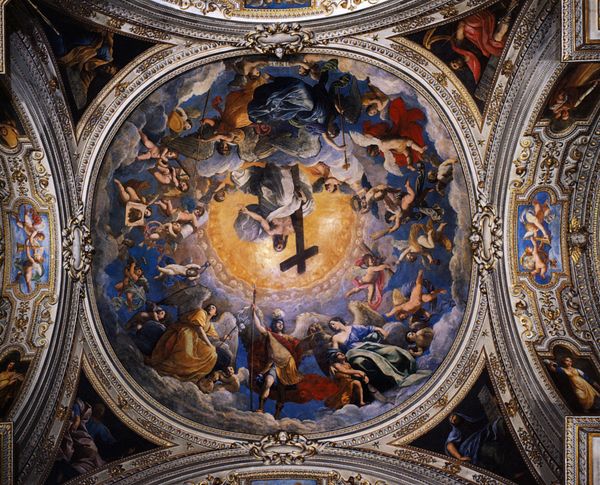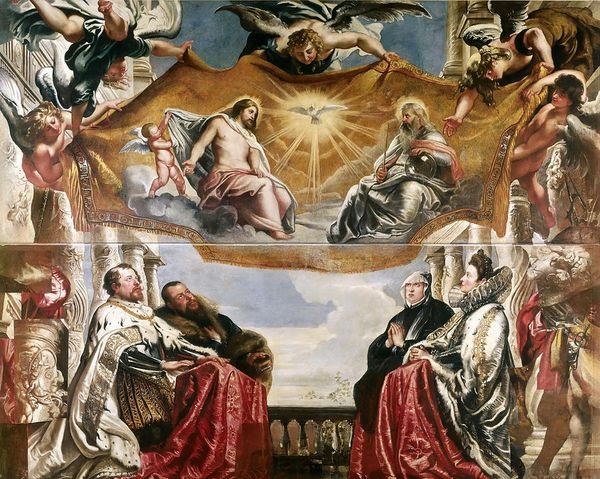
painting, oil-paint, fresco, architecture
#
portrait
#
baroque
#
painting
#
oil-paint
#
fresco
#
christianity
#
history-painting
#
italian-renaissance
#
architecture
#
angel
#
christ
Dimensions: 62 x 81 cm
Copyright: Public domain
Curator: Looking up at this fresco by Guido Reni, painted in 1613, one is immediately struck by the intense upward movement and light. Editor: It feels positively dizzying, a Baroque explosion of figures swirling towards a divine radiance. What's the subject here? Curator: This is "The Glory of St Dominic." Reni has depicted Saint Dominic in the center, surrounded by a celestial court of angels, saints, Christ, and the Virgin Mary. Note how the whole scene is framed as if bursting forth from within architecture. Editor: The composition is fascinating. I’m drawn to how Reni uses contrasting dark robes with luminous skin to create dynamic relationships. Tell me more about Reni’s process? Was fresco his primary medium? Curator: While Reni was certainly skilled in oil painting, fresco became incredibly important for the sheer scale it allowed him to achieve. This particular work was completed in Bologna, and we have a decent amount of documentation outlining his engagement with assistants in the preparation of pigments. It's crucial to understand how these very human elements intersect with the heavenly subject matter. Editor: The use of fresco is interesting considering its durability – connecting with the theme of timeless divine glory. Focusing on semiotics here, the color, composition, and dynamism convey an overall effect of awe. The eye is drawn immediately upwards and the swirling figures become almost dizzying when trying to track them individually. Curator: Exactly, and that “dizzying” effect isn’t accidental. Reni consciously crafts a space of theatrical transcendence. It really underscores the cultural moment from which it came: Catholic Reformation in full swing, employing all means at its disposal to reclaim religious dominance. The choice of depicting Dominic, who was also tied to efforts against heresy, seems particularly relevant. Editor: Yes, examining its construction reveals purpose—not just aesthetically, but as a didactic tool employed amidst complex social and theological struggles. Thanks for the insight, fascinating! Curator: The pleasure was mine! Always refreshing to peel back layers to explore the making and unmaking within and around artistic expression.
Comments
No comments
Be the first to comment and join the conversation on the ultimate creative platform.
